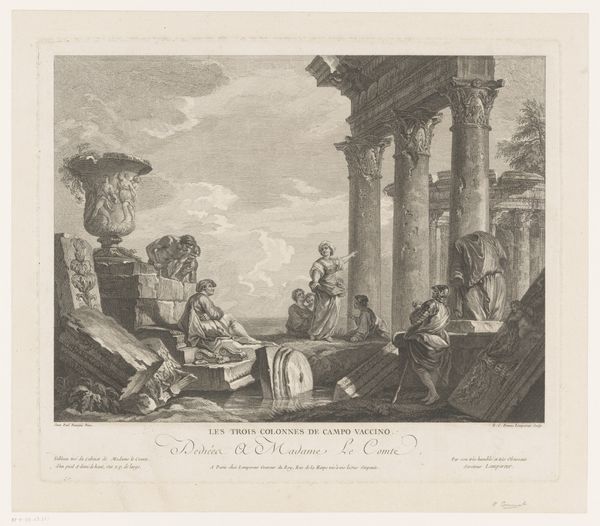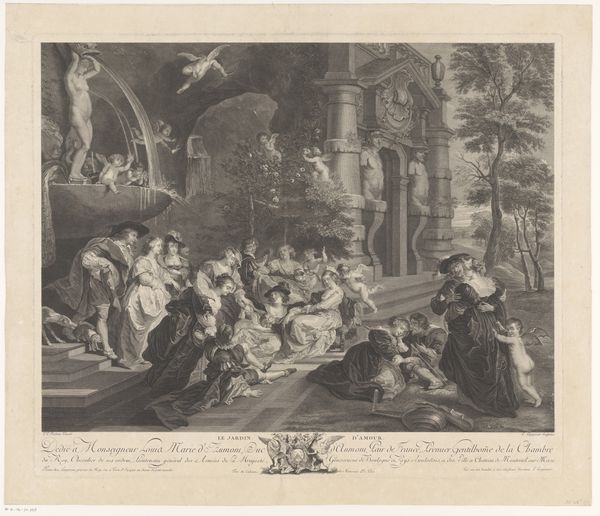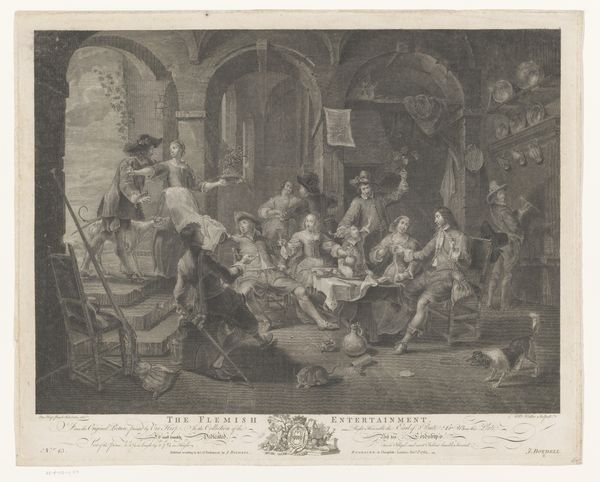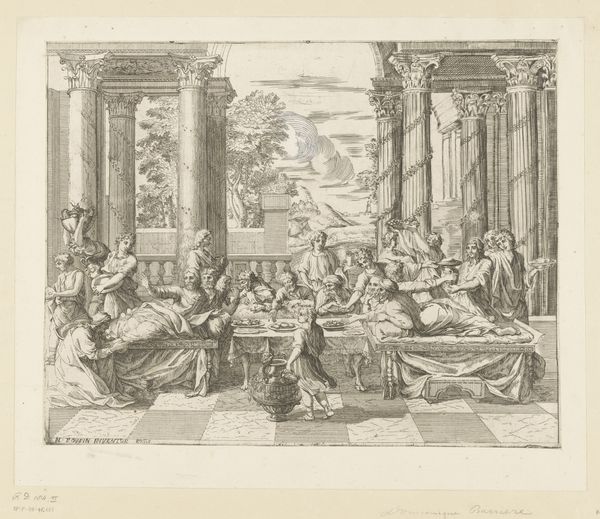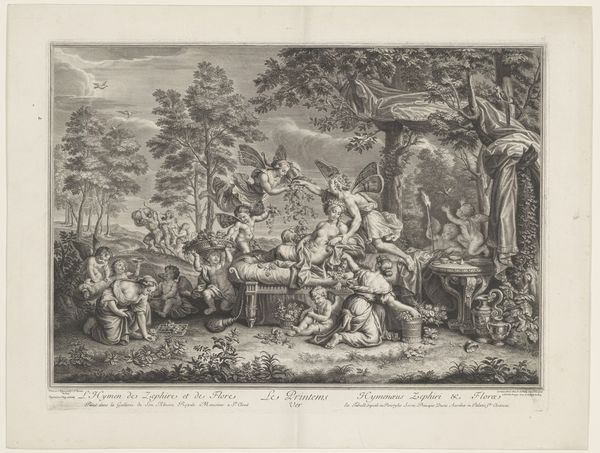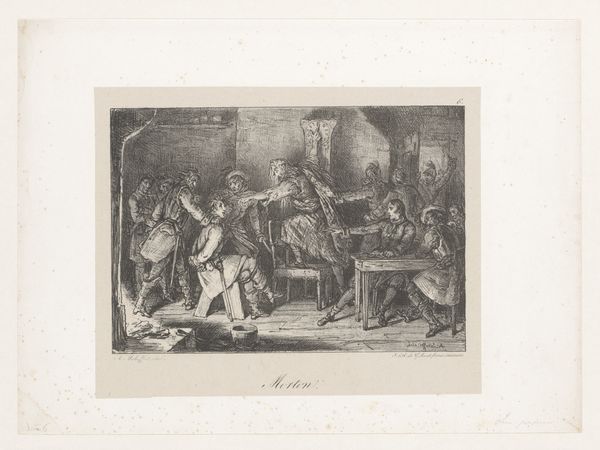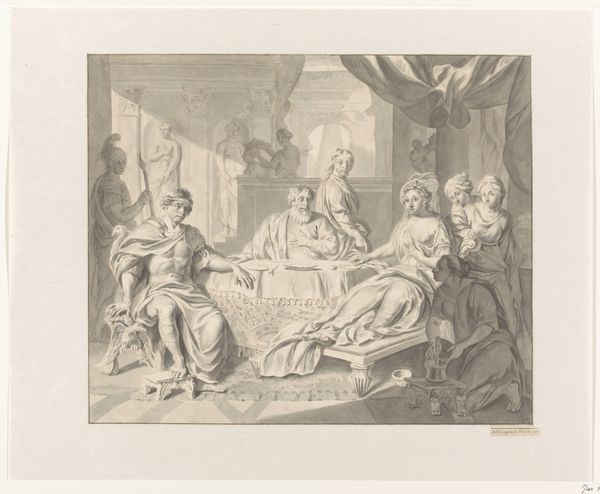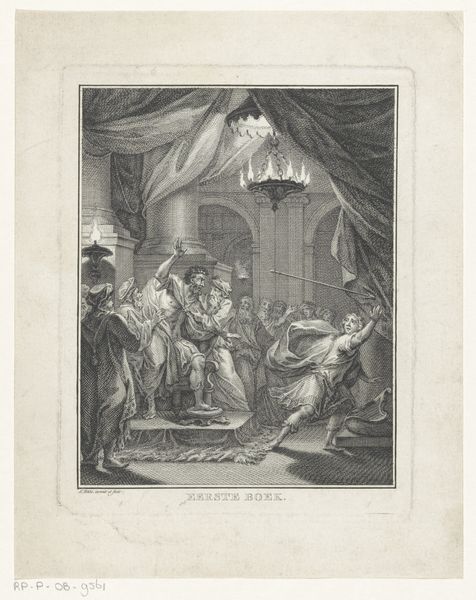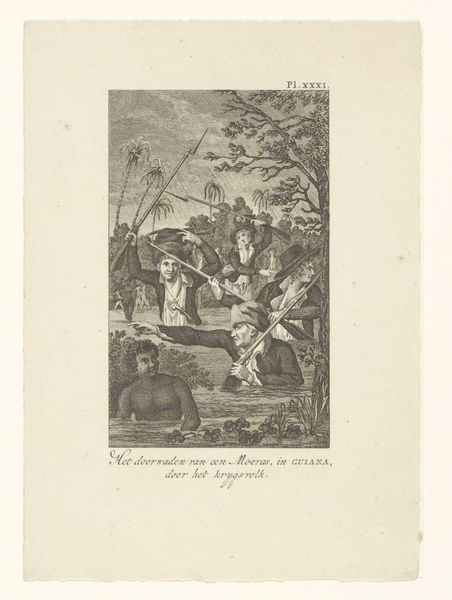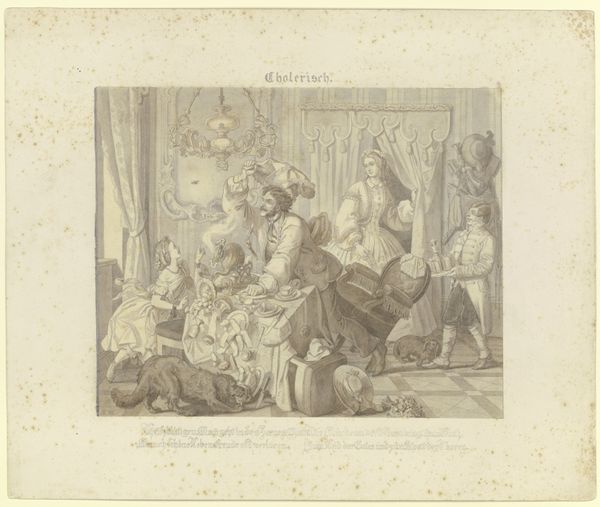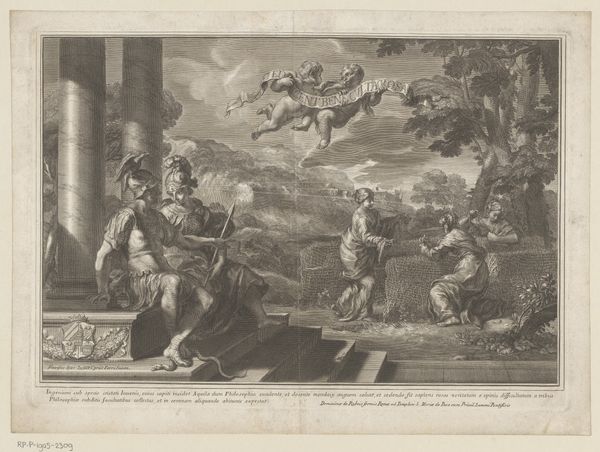
print, engraving
#
allegory
#
baroque
# print
#
history-painting
#
engraving
Dimensions: height 296 mm, width 363 mm
Copyright: Rijks Museum: Open Domain
Curator: The print before us, titled *Allegorie op de muziek* or *Allegory of Music*, was created by Jakob Wangner, likely between 1729 and 1781. The Rijksmuseum holds it now. It presents as a rather elaborate tableau. What are your initial thoughts? Editor: It's busy, almost theatrical in its arrangement. The texture created through the engraving process, especially in the drapery, gives a strong sense of weight and density. Curator: Indeed. Wangner masterfully employs engraving to define forms and delineate space. Note the interplay of light and shadow, how it directs our gaze, a hallmark of Baroque aesthetics. Consider, too, the very conscious design and architectural components of the setting. Editor: Speaking of which, the architecture, those heavy pillars and ornate balcony… they speak volumes about the patronage that fostered this kind of artwork. Who was consuming this imagery and what were their material conditions? The image is an output of social structures as much as anything else. Curator: A fair point. However, focus, if you will, on the compositional structure: the balcony’s position directs our sight to the subjects within a well designed and visually intriguing area, emphasizing symbolic meaning. Look how Wangner organizes those human elements, framing the central musicians. Editor: The arrangement certainly echoes the power dynamics of the period; musicians are being used to frame powerful figures. The labor involved in the performance, from instrument making to their skilled performance is largely elided. Curator: Though a print, Wangner elevates his material through design and technique. The detailed hatching, cross-hatching, and delicate lines. All culminating in a dynamic composition reflecting an era where beauty and complexity were deeply valued. Editor: Right, so beyond the aesthetic experience, which is clearly orchestrated by access and means, where did the paper come from, and who ground the inks for this particular print? Considering the larger socio-economic structures gives context and heft to this image of sonic expression. Curator: Your perspective undeniably adds layers of meaning. Considering that printmaking democratized image consumption compared to painting. It really forces us to see the intersection of art, commerce, and access. Editor: Agreed. Analyzing material relationships reveals overlooked layers of the subject portrayed in art, providing richer historical insight. Curator: A fruitful exchange! It enriches how we, and hopefully our listeners, consider *Allegorie op de muziek*.
Comments
No comments
Be the first to comment and join the conversation on the ultimate creative platform.
